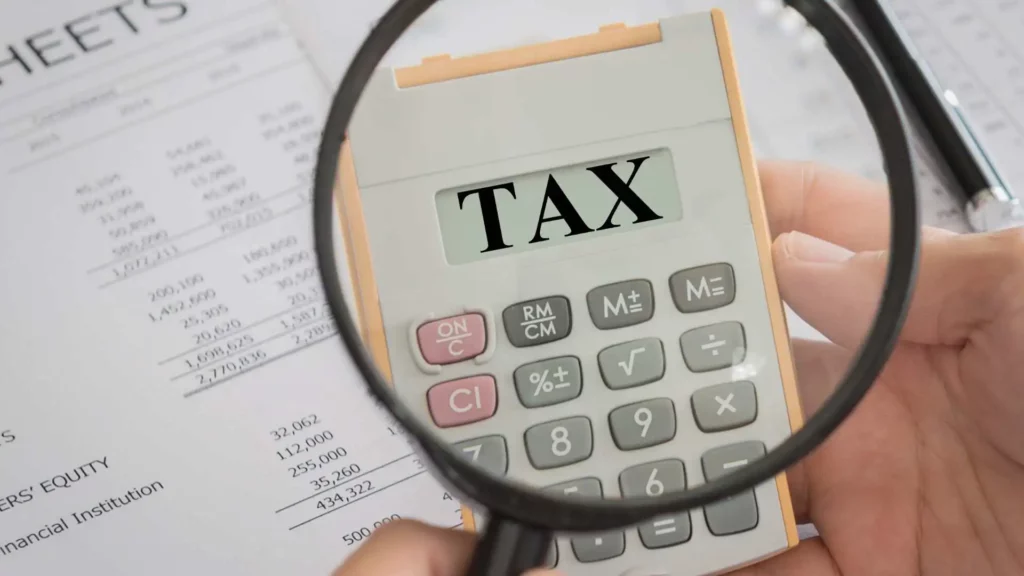Filing taxes as an Uber/Lyft driver cannot get easier than this. During the 2023 tax season, workers and employees of various sectors can face confusion about the type of taxes they have to pay. One such industry includes rideshare aggregator businesses. As a driver for rideshare apps like Uber or Lyft, you are considered an independent contractor, and not an employee. So, how do Uber and Lyft drivers file their taxes during the 2023 tax season?
The IRS considers drivers for Uber/Lyft as self-employed. Therefore, it is important for you to understand the major difference between an independent contractor and a salaried employee, especially while filing taxes. Beem, America’s first Al-powered Smart Wallet App, is one platform that can help you file your taxes this season and get the maximum refunds. Use Beem’s Free Tax Calculator to assess your refund.
As an independent contractor, an Uber/Lyft driver must pay self-employment taxes along with their regular income taxes. This means that you may have to pay a larger tax bill when you file. However, by tracking your tax deductibles, you can ensure eligible tax deductions for business expenses to reduce overall taxable income.
Do Uber/Lyft Drivers Have To File Taxes?
If you have been working for a rideshare app like Uber or Lyft as a gig or part-time job, you may find the methods of filing taxes much different than your other jobs.
As you are recognized as a self-employed worker, your taxes won’t be cut from your salary by your employer. Uber/Lyft drivers are required to be extra certain about their taxes as their jobs are considered a business, unlike regular employment, where an employer would ensure that the employee is paying the appropriate amount of taxes to the government by cutting it from their payment.
For regular employees, a part of their wage is taken away from their paycheck. The employed worker just has to collect their bill with the US government while filing their annual tax returns. But, in the case of rideshare drivers, they will have to file their taxes on their own.
Most rideshare drivers report their income as sole proprietors, which allows them to report their income from the gig on their personal tax return.
How Uber/Lyft Driver File Taxes?
The federal or state government doesn’t withhold taxes for an independent contractor. However, it becomes their duty to file taxes at the end of each year. As a Lyft or Uber driver, there are a few key concepts you must know:
- You must send tax payments to your state and the IRS.
- Report an income figure matching what your company reports to the IRS as your payment.
Do you wonder how differently taxes work for Lyft drivers from Uber? It is quite similar, as you may get a 1099-K form and a 1099-NEC form from Lyft and Uber.
Regular employees, on the other hand, receive a W-2 tax form to file their tax returns.
Employers of contractors who receive the 1099 forms don’t take any taxes out of their payments. As a result, independent contractual drivers must set aside enough money to pay taxes on their incomes from Uber or Lyft. You will also be responsible for paying self-employment taxes as independent contractors if your income is more than $400. The amount may vary according to which state you work in.
The self-employment tax rate for 2023 tax season is 15.3% of your net earnings. This includes the sum of a 12.4% Social Security tax and a 2.9% Medicare tax on net earnings.
Forms Required For Filing Taxes As A Uber/Lyft Driver
You may receive two forms the 1099-K form and the 1099-NEC form from Uber and Lyft. You will receive the 1099-K form if you have generated over $600 in customer payments. And the 1099-NEC form is handed out if you make over $600 in non-driving income. This includes bonuses from the company, referral fees and other monetary awards.
You may still have to file the taxes, even if your income from Lyft or Uber doesn’t rise to the level of receiving a 1099 form. These forms typically report a higher income than the actual. They consider the amount paid by your customers before Uber or Lyft takes their fees.
Self-employment Taxes
You will be required to pay regular income taxes in addition to self-employment taxes. Unlike the self-employment tax, income taxes are not standard and depends on the amount of your actual income, wages from part-time jobs, your filing status, deductible expenses and your tax bracket. However, a good measure to avoid issues during filing taxes would be to set aside 25-30% of your net income to pay your self-employment and income taxes.
Quarterly taxes
Paying taxes quarterly can be of great help, especially for gig workers. You can pay taxes in four quarterly payments rather than a lump sum amount. Can Lyft and Uber drivers have to pay their taxes quarterly?
For many self-employed workers, such as Uber/Lyft drivers, Tax Day doesn’t just end once a year on April 15, 2023. Instead, they file taxes quarterly, at least four times a year.
As Independent contractors, you must pay self-employment taxes through four quarterly payments throughout the year in accordance with the IRS. The due dates for the quarterly payments during the 2023 tax season are:
- April 18, 2023: Taxes due on earnings from January 1 – March 31
- June 15, 2023: Taxes due on earnings from April 1 – May 31
- September 15, 2023: Taxes from June 1 – August 31
- January 15, 2024: Taxes from September 1 – December 31, or for the full year ahead
Tax deductions for Uber/Lyft drivers
Filing taxes in the current global financial scenario can be daunting. But, don’t worry! The IRS gives you some relief while filing your taxes in the form of ‘deductions’.
You can deduct some of your business expenses from the gross income before it is reported by Uber or Lyft. The IRS and the state authorities will only tax you based on the amount left after deducting those expenses, which will be reported on your 1099 forms.
These expenses can be deducted while filing taxes for Uber/Lyft drivers:
- Mileage: Keeping a meticulous record of the distance driven by you is very important to avail deductions as the IRS provides a standard mileage rate deduction to self-employed people. However, choosing this deduction will mean that the other deduction options cannot be chosen.
- Vehicle expenses: Lease payments, vehicle registration fees, car insurance, maintenance and repairs, and depreciation are included in deductions.
- Phone bill: You are required to keep a phone to work as a Uber or Lyft driver. Certain expenses related to phone bills and repair cost could be used as deductions.
- Miscellaneous: Other deductions that can be availed while filing taxes include purchasing equipment, insurance, parking and toll bills.
Conclusion
Want to have the easiest tax season this year? It is crucial to understand tax implications of your gig work and how Uber drivers and Lyft drivers file their taxes. Self-employed taxes can be tricky. Take the pressure off of yourself and let us help you with online tax filing benefits. While some Lyft drivers may explore cash advance for Lyft drivers to cover expenses between payouts, it’s important to remember these can be costly and shouldn’t replace proper tax planning. Understanding your tax obligations will save you money in the long run.






























